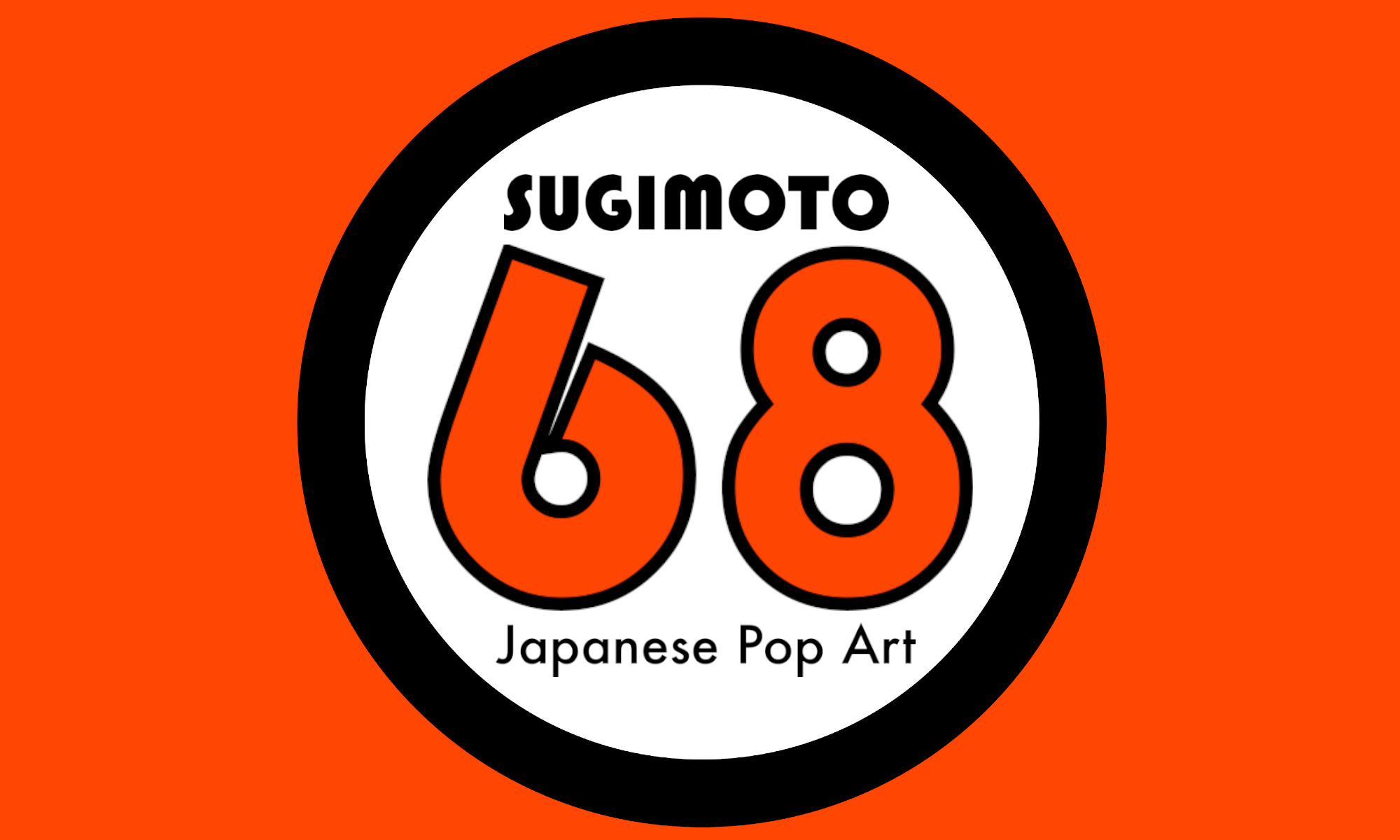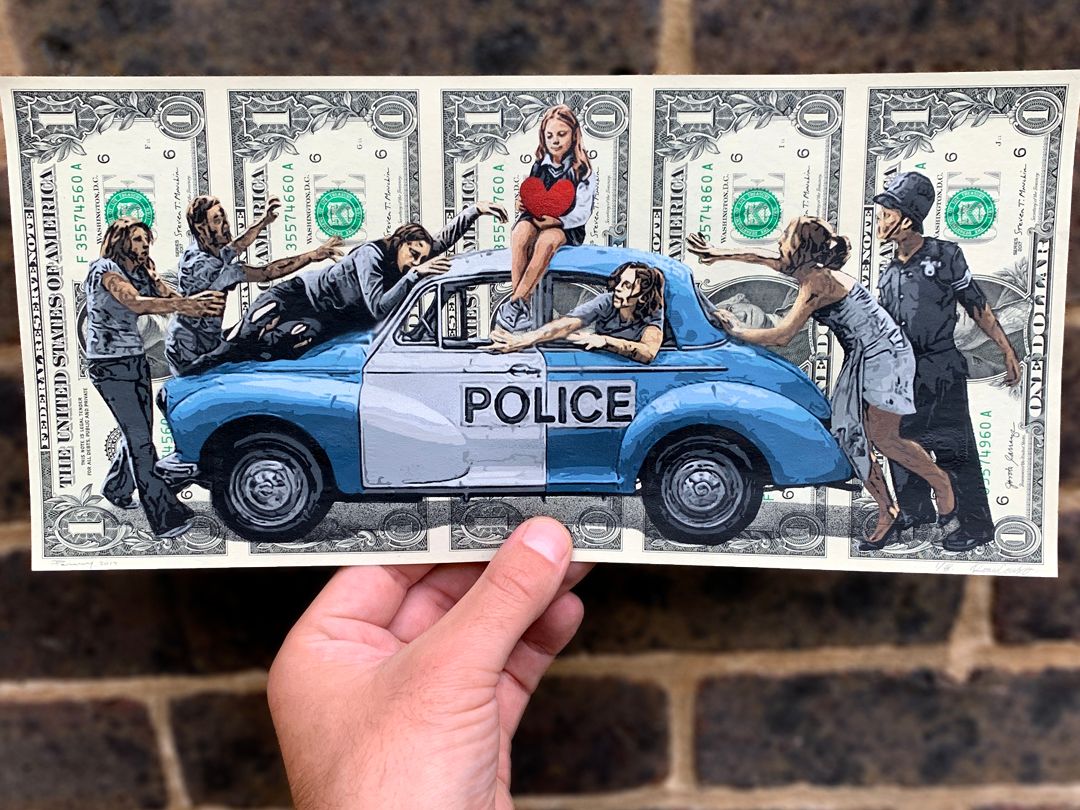“Art without contradiction lacks fascination & beauty”, Roamcouch from Fool’s Gold Roamcouch
Art and Contradiction sum up the enigmatic Roamcouch, perhaps the best known Japanese graffiti artist (maybe second to this guy raised in the US). Roamcouch’s 2014 premier solo show in the U.S., Beautiful Life, established his street cred and trademark style of beautiful contradiction evoked through a clash of realist scenes bounded by surreal toy-like backdrops of rainbows and stars, as in the works Rainbow Inc. and When you wish upon a star. Revolution illustrates rebellion in the hands of innocents who take aim at justifiable social ills––such as the POlice.

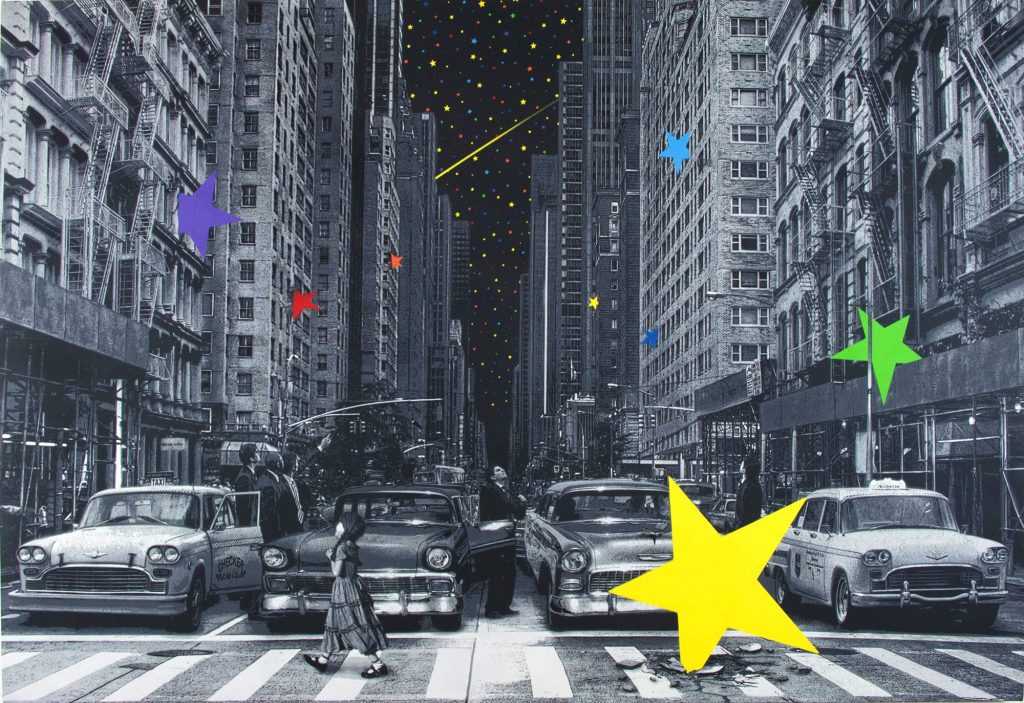
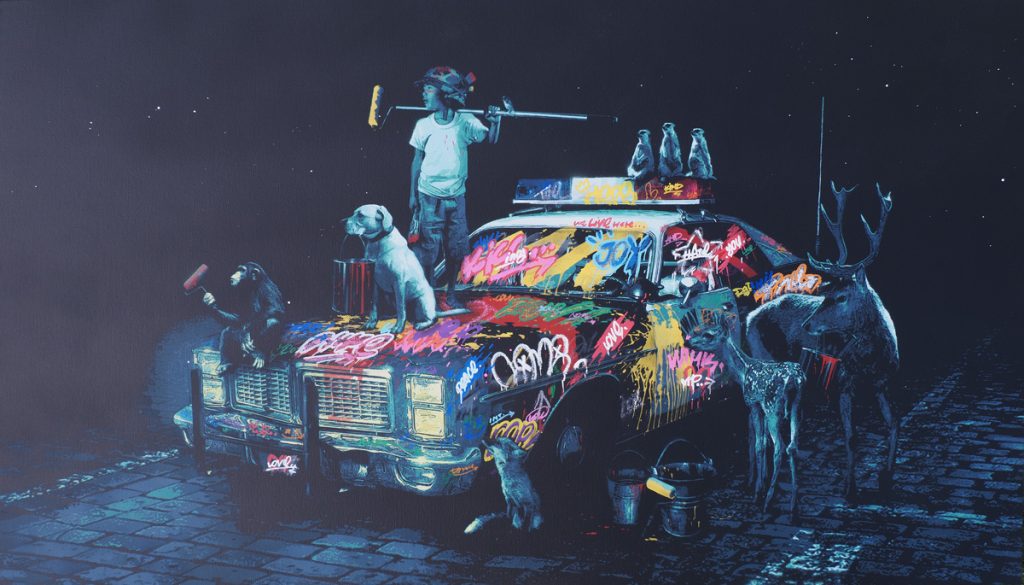
In recognition of his U.K. solo exhibition debut Seasons by Roamcouch at the Rah Gallery sponsored by Kumi Contemporary, this missive introduces the legend Roamcouch, based on a 2017 interview by Soyo Hasegawa for Street Art News Japan appearing in Fools Gold Roamcouch, a limited edition exhibition brochure produced for Roamcouch’s 2017 debut Japan solo show Memories at Gallery Kawamatsu in Tokyo.
Beautiful Contradiction
Roamcouch’s work evokes elegant contradiction. He notes that the appearance of contradiction draws in the audience by making them question and reflect upon the work; art lacking contradiction only holds attention for a short time. That tension produced by contradiction makes the viewer search for deeper insight. Rainbow Inc. Brooklyn Bridge, a realist painting of the Brooklyn Bridge in NY created for his US debut creates the pull of contradiction through the unreal Rainbow, a feature that triggers reflection upon the juxtaposition of realism and the surreal. Different from the surrealist, Roamcouch takes a slice of everyday life and infuses it with playful backdrops. The darkness and light in much of his work reflects his real world experience.
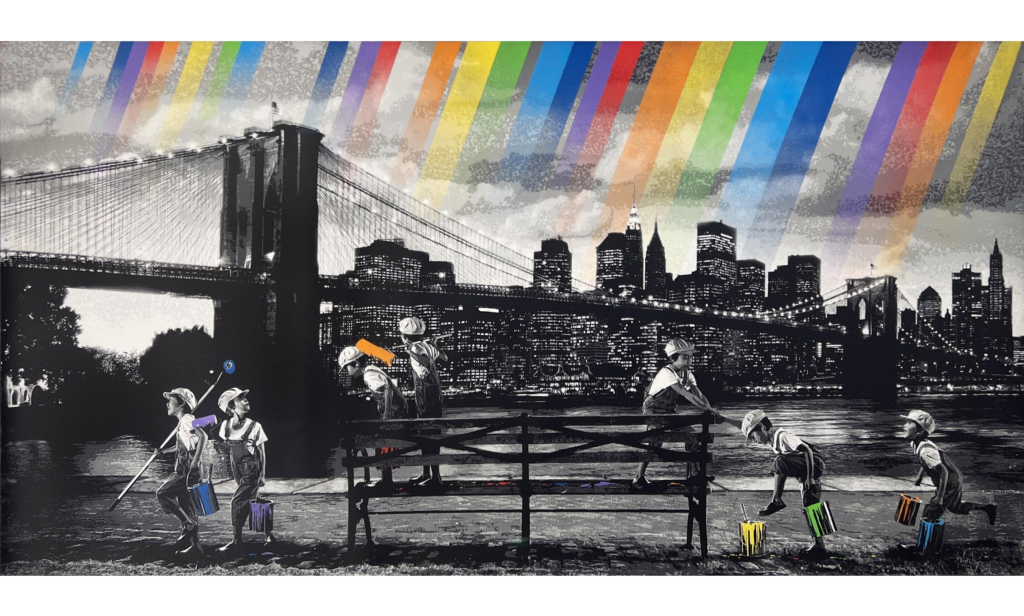
Ryo Ogawa’s Inspirational Haze
The artist formerly known as Ryo Ogawa worked in design after graduating from university. The demands of his work eventually led him to become extremely ill—to the extent that he even had difficulty walking and standing. During his convalescence appeared an unconscious hazy vision of a couch to rest upon. He reasoned that that couch represented his art, because even in depths of illness, his drive to produce art remained. The name Roamcouch was born. The name positions his art as a firm seat upon which to recover from the trials of life––Art as a haven. His illness and recovery informs aspects of his work. His first U.S. exhibition theme, Beautiful Life, reflected his thankfulness for the opportunity to showcase his work abroad––a show which became a runaway hit for Roamcouch.
Eponymous Influences
Powerful visual aesthetics draw Roamcouch to particular artists and works. Roamcouch holds the greatest fascination for the Wind and Thunder Gods folding screen 風神雷神図屏風 Fujin Raijin-zu Byoubu, by Tawaraya Sotatsu 俵屋宗達, a 17th century Edo era artifact provenance of Kennin-ji 建仁寺 , perhaps the most ancient Zen Buddihist temple in Kyoto. (Ogata Korin 尾形光琳, whom Murakami fans know, produced an 18th century version.) Roamcouch notes that the work contains a quality incomprehensible, yet incredibly intense, such that it captivates the viewer.
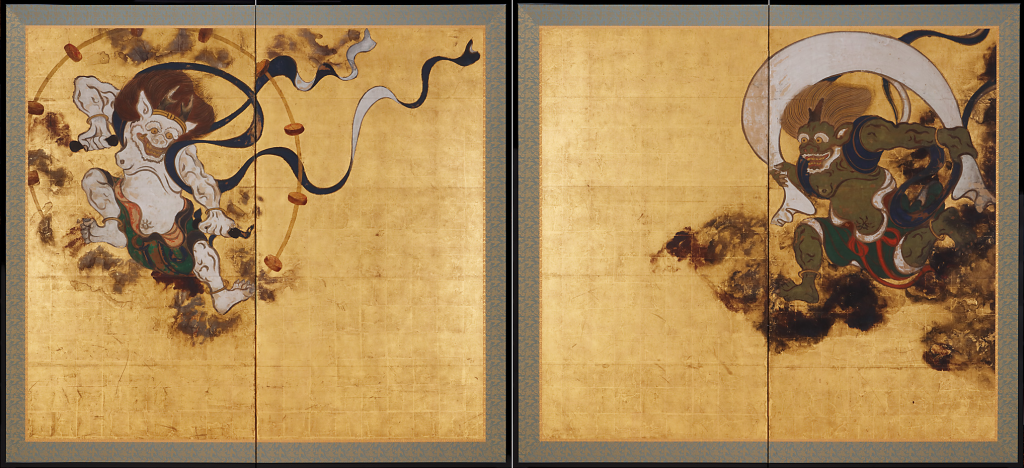
Don’t be SHOK-1 ed!
Roamcouch finds a number of contemporary graffiti artists impressive, most notably SHOK-1, of x-ray images fame. Roamcouch describes SHOK-1 work as the creation of supremely powerful images that leave their mark upon the viewer; however, at the same time he would probably not hang the work in his room as it generates an overwhelming deluge of visual intensity.
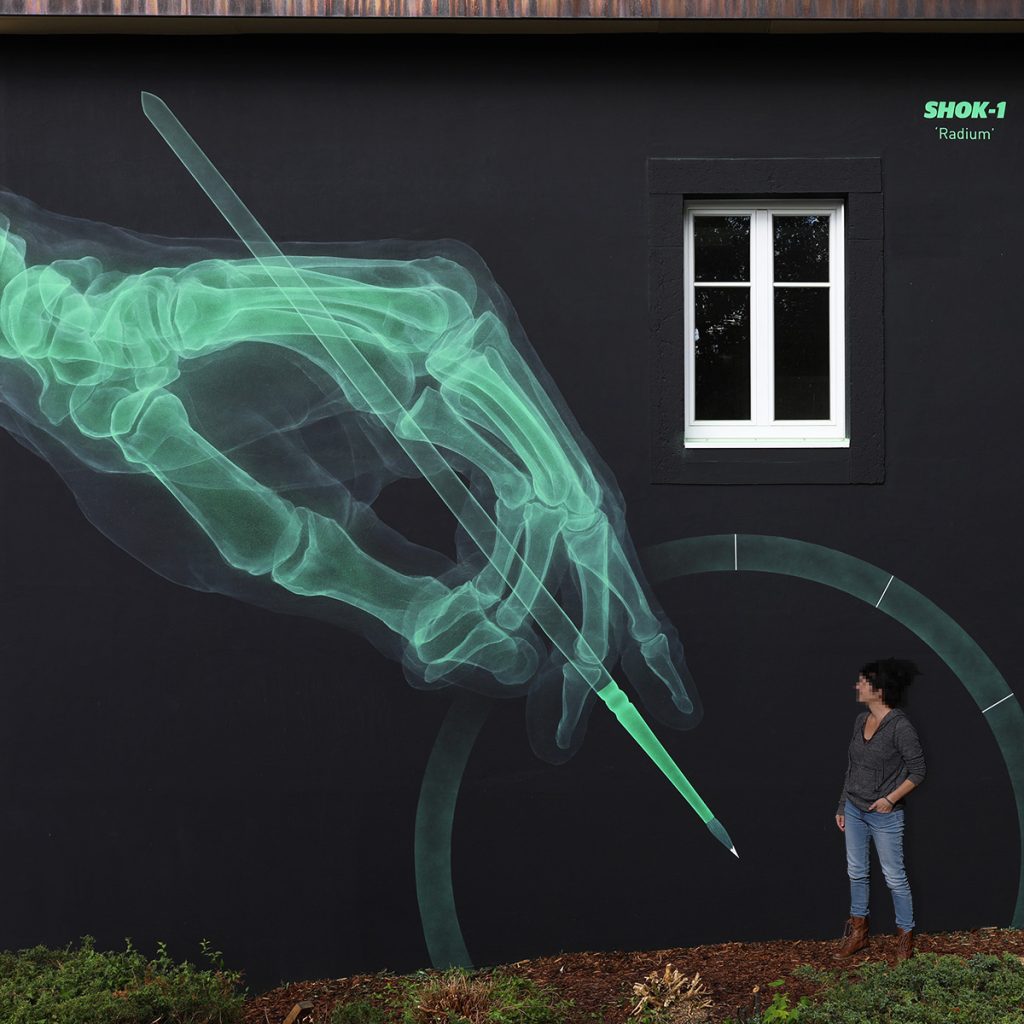
Dolk, Pejac and… Manet???
Roamcouch enjoys the humorous evocation of contradiction in Dolk’s Prisoner and Pejac’s Vandal-ism. Simple imagery conveys power and the tension of contradiction constructed through careful juxtaposition of paradoxical imagery—A prisoner relishing his chained weight as a shot put; A vandal defacing a wall with Manet’s Le Déjeuner sur l’herbe Luncheon on the Grass. The literal message of a work matters less than its ability to evoke an atavistic impression from the viewer.

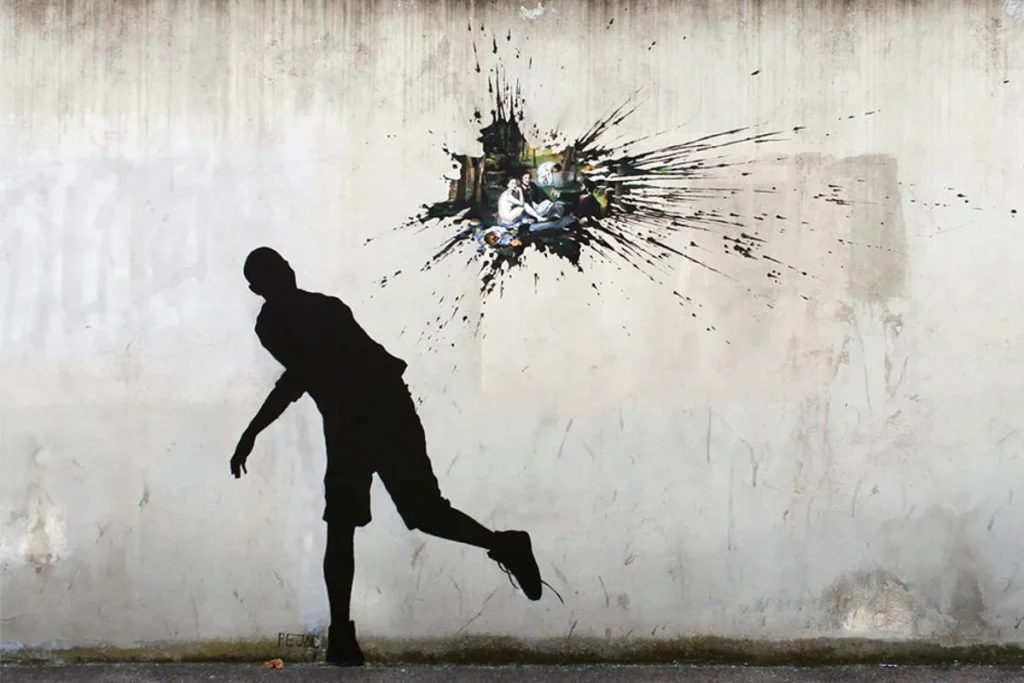
Legally Muraled
While considered a graffitti artist, Roamcouch self-identifies as a mural artist. Although spontaneous, transgressive stenciling holds temptation (as every graffiti artist has done at least once or twice he nonchalantly mentions, nod nod wink wink), he touts the importance of receiving official permission. Roamcouch entails the effort it takes to get approval to paint murals; he has to take time to get permits, and convince skeptics through reasoning and samples of his art. As he must change people’s hearts and minds about mural art Roamcouch eventually receives greater community support. The Emotional Bridge Project represents the epitome of Roamcouch’s art diplomacy. Since 2014 he has stenciled mural art scattered about his hometown of Ampachi 安八町 in Gifu. His work has inspired young artists and contributed to revitalization of his community.
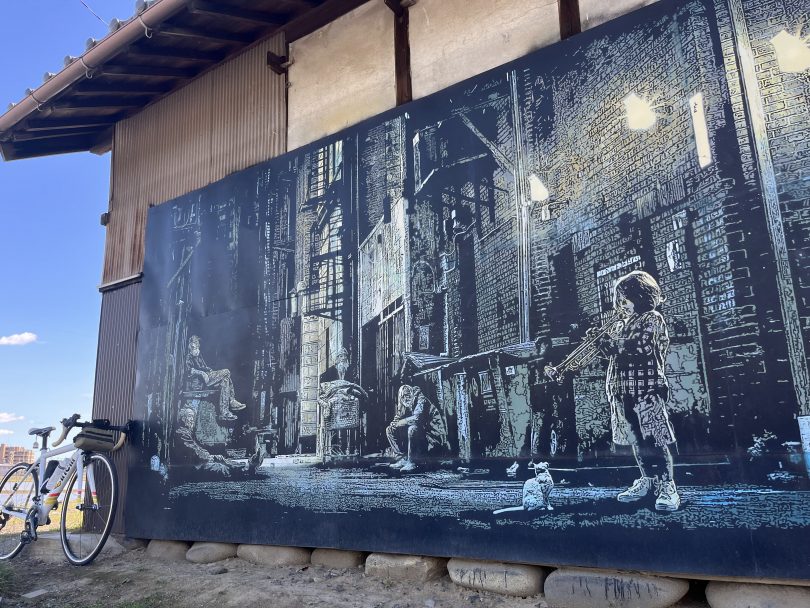
Silkscreens and the Art of anger management
Roamcouch is famed for painstakingly detailed silkscreens crafted with intricate handmade stencils such as for Rainbow Inc. Roamcouch details the challenges of producing high quality silkscreen work for his 40 color silkscreen masterpiece, Nadeshiko (2016). Roamcouch first found a silkscreening artist, internationally. Roamcouch monitored every step of the process, yet they still had to destroy two imperfect print runs over the six month ordeal. Roamcouch, certain that his silkscreener despised him at the end, nevertheless achieved a spectacular result. Roamcouch’s drive and expertise informs every step of his art production.
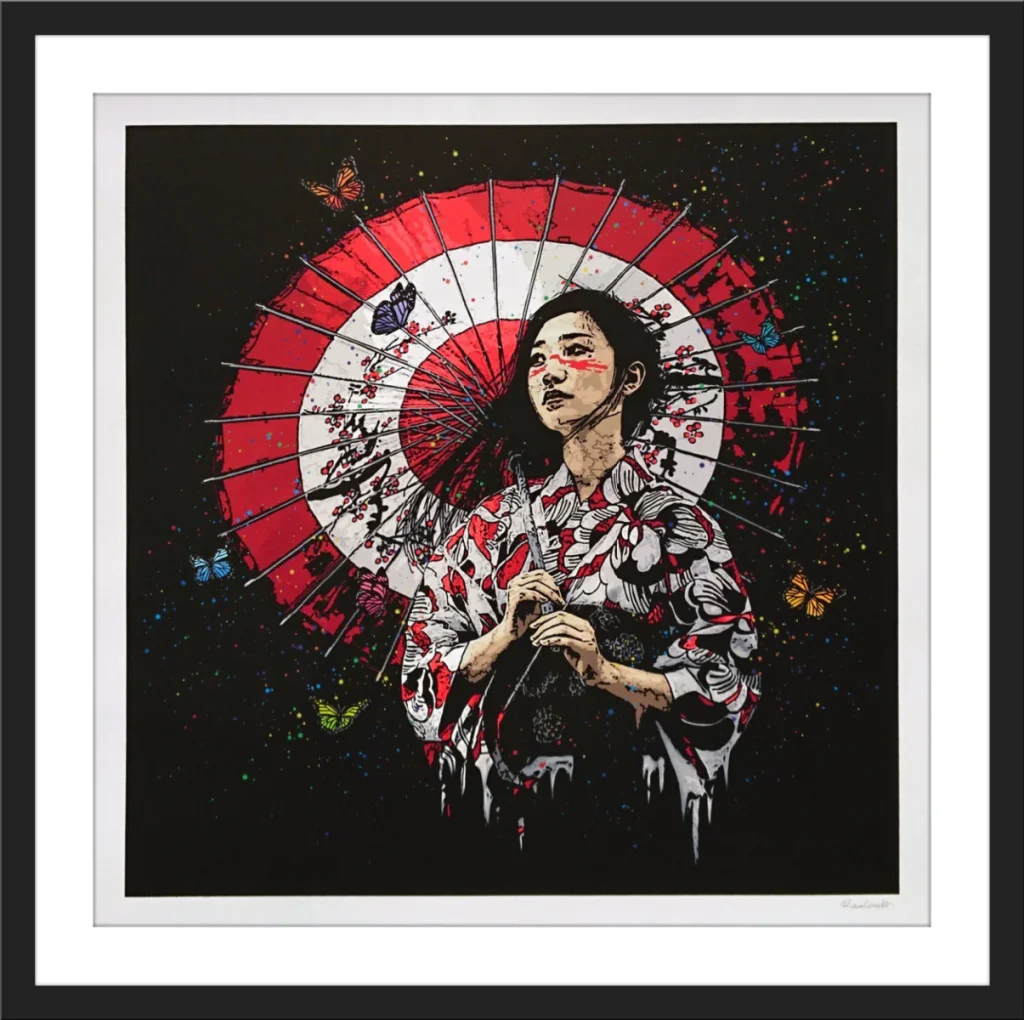
Once and Future Kings
His singular drive has provided opportunities to collaborate with renown artists such as Martin Watson and Penny (e.g. Zombie Dollars 2019 at the top of this post) . In the future he would love to work with Eelus or even the legend Yoshitomo Nara.
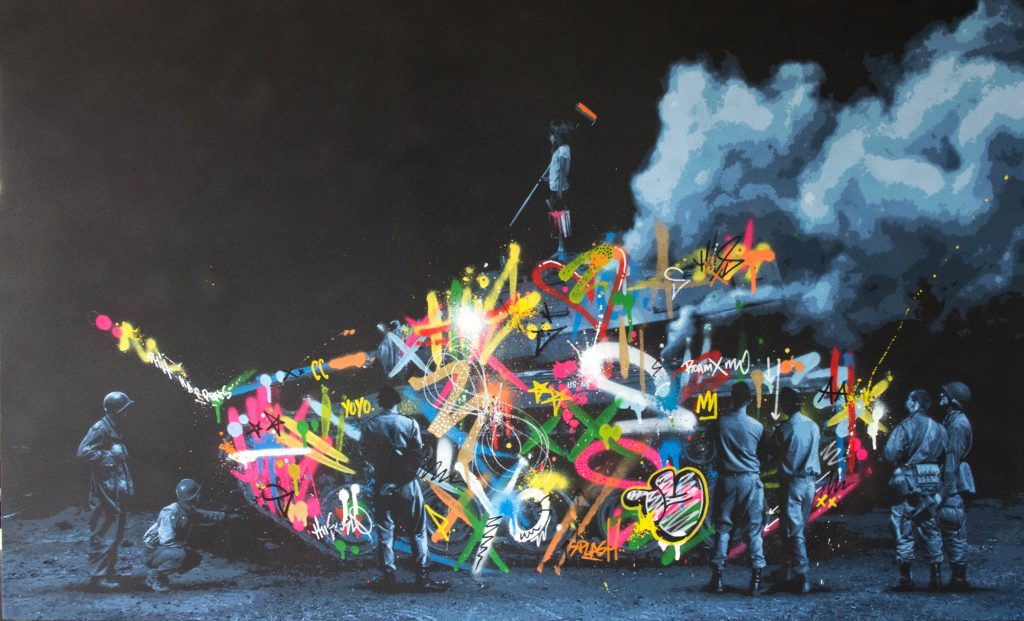
Ultimately Ryo Kawamatsu of Gallery Kawamatsu informs the appeal of Roamcouch the best–– “Roamcouch evidences purity and gentleness in both his work and method.” Children often act as protagonists in stunning landscapes working as ideal agents to pull off Roamcouch’s Robinhood-esque antiestablishment themes. Roamcouch’s accessibility (I’m not into being avant-garde, he says) and ethic makes him attractive to all viewers.
As usual, don’t forget to exit through the gift shop:)
